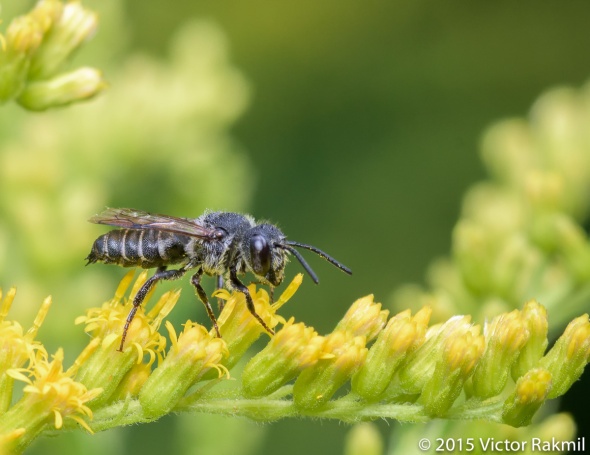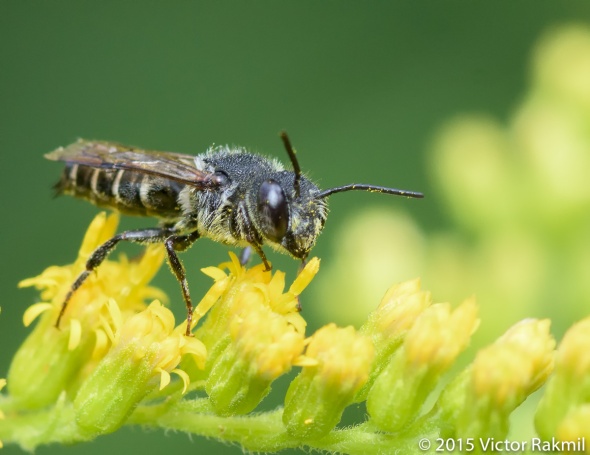A Comment on Depth of Field in Close-up Photography (Two Photographs)
 To view more of my photography please click on www.rakmilphotography.com
To view more of my photography please click on www.rakmilphotography.com
I was interested in how this wasp seemed to delicately walk along the flower but was disappointed in the background, so I took the decision to dial back my aperture to F10. At that aperture I had a brighter photograph and less detail in the background. The best photograph was going to be where the wasp turned towards the camera. I hoped that would keep the focus. Guessing how the wasp would move, as you can see in the second photograph taken seconds later did not work out so well. It is a lesson on how narrow the depth of field at F10 can be. You only get one chance and I should have chosen more depth of field at the expense of light and background to get the shot I wanted.


Depth of field is very limited when shooting this close to your subject. The best solution is to keep the main subject parallel to your focal plane.
LikeLike
January 7, 2016 at 11:42 am
Yes. If you look at my images on smugmug. You will see I go for interesting shots and always the side view. But you are correct.
LikeLike
January 7, 2016 at 11:46 am
super pic
LikeLike
December 14, 2015 at 11:03 am
Thanks
LikeLiked by 1 person
December 14, 2015 at 11:16 am
I have had a look thru your page, such a great source of information.
Nothing I can say, excepts for the word “perfect”.
If u have time, you are more than welcome to visit my page, trinhmanhdo.com
Thank you
LikeLike
December 14, 2015 at 6:54 am
Excellent point on depth of field. An f/10 in normal shooting gives me a great deal of depth. Not so in macro. More to consider when I do macro photography. Victor, you’re a wealth of information.
LikeLike
December 14, 2015 at 2:21 am
Thanks
LikeLiked by 1 person
December 14, 2015 at 4:49 am
Excellent.
LikeLike
December 14, 2015 at 1:58 am
Thank you
LikeLike
December 14, 2015 at 4:48 am
This is a constant challenge in nature photography – with the dragonfly, the great blue heron and the egret, etc.– those creatures that have extended length and width are difficult to get in full focus (head to tail and wingtip to wingtip) while also achieving a lovely, muted background. What you’ve done in the second photo – to get a focus on the eye of the creature – is a good secondary solution. The viewer’s attention will go to the eye and that will become what I call the “hot spot” of your photo. Still, keep experimenting with your aperture and dof.
LikeLike
December 14, 2015 at 1:19 am
PS I think your first photo above is stunning!
LikeLike
December 14, 2015 at 1:20 am
Thank you.
LikeLike
December 14, 2015 at 4:48 am
Very true.
LikeLike
December 14, 2015 at 4:47 am